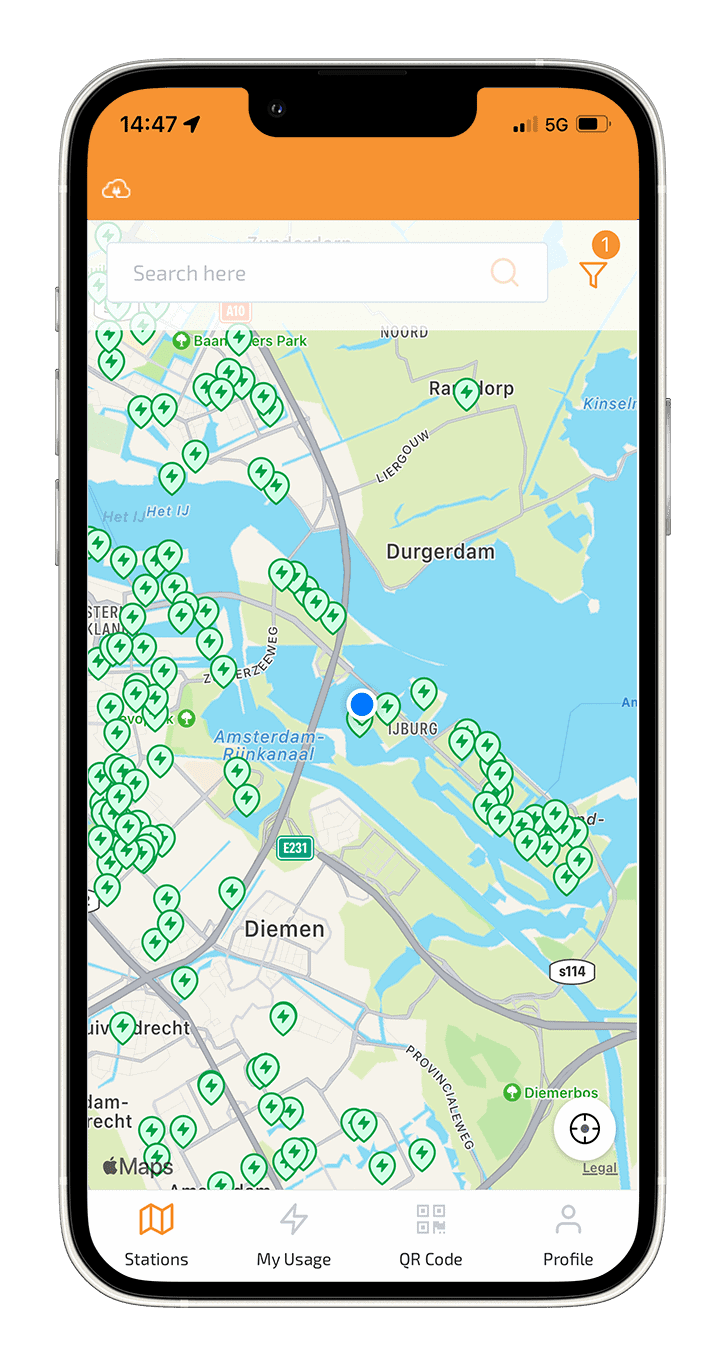Amsterdam, February 24, 2023 – To charge an electric car, you need at least the following things: a charge-card or -tag, a charger cable, and a charging station. Then what? Because how does charging an EV work exactly, and where can you find a charging station? We’d love to help you get started.
You can charge your EV at several different places. Think; public charging, in a parking garage, along the highway, at an office location, or your own home. When you connect an EV to a charging station with a charger cable, you charge the battery of the car. The speed of charging stations can differ greatly, and is dependent on several factors. Within this, we differentiate between ‘regular charging’ and ‘fast charging’.
Regular charging
Regular charging stations can be private, or publicly accessible. For a publicly accessible charging station you always need a subscription. By using your charge-card or -tag at such a charging station, it can read the station to see who the provider is, and where the invoices need to end up.
These charging stations usually have regular charging speeds. You can charge your EV at these stations when you won’t need it for a while; for example at home during the night, or at an office location during daytime. The time your car takes to be fully charged depends on the type of charging station you use as well as your car itself.

Fast charging
Imagine you’re on the road and your car battery will soon be completely empty. You won’t want to have to wait for hours for the battery to be fully charged again. In this case, you can use a fast-charging station. You can usually find these along highways, usually placed at petrol stations. To be able to charge your EV at a fast-charger you will need a charge-card. With a fast-charger you fully charge your battery, you guessed it, way quicker than at a regular charging station.
When you’re in for a long drive, for example when you’re on your way to a holiday destination, it’s smarter and faster to charge your EV a short while more often, that to make less stops and charge your car’s battery fully in one go.
Because fast-chargers are more complex than regular charging stations, charging is also more expensive at these locations. You can tell by the tariff providers charge per kWh. Because of this, it’s best to only charge at a fast-charger when a regular charging station isn’t available.

Charge with E-Flux
When you own an E-Flux charge-card, you’re sure you can always charge your EV, whenever and wherever. Thanks to the great coverage of our network of over 300.000 charging locations, there’s always a charging station available nearby. Want to know where the nearest charging station is located? With the E-Flux app you can open a map that will show you an overview of every available charging station, as well as their corresponding tariffs. This way, you can easily navigate to a charging station nearby.
Route planner
A tip from us! The ANWB (roadside assistance) is currently launching a handy EV-routeplanner. You can fill in your information, and within the blink of an eye you receive a perfectly planned route that shows you exactly where and when to charge your EV. This is wonderful for long drives.

